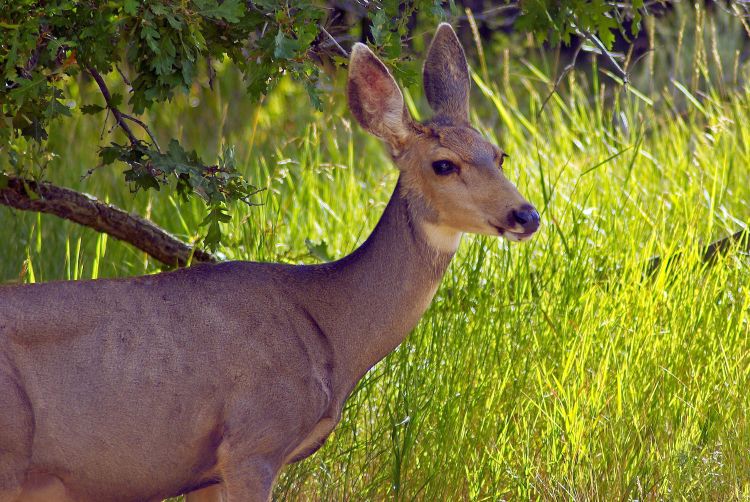Managing the land you hunt
Consider harvesting antlerless deer this season to help control the population and the spread of diseases like chronic wasting disease (CWD).

As you prepare to make your annual fall trip into the woods to enjoy Michigan’s white-tailed deer hunting season, it is important to think about your deer management strategy. As you evaluate the area in which you hunt, it is important to critically examine the current deer population in the area, the quality of the habitat, and how well the habitat supports the current deer herd.
According to studies by the National Deer Association, Michigan deer hunters, on average, spend more days hunting than hunters in any other state and are more successful in their hunts. Michigan hunters also harvest more bucks per square mile than hunters in any other state. However, very few hunters harvest more than one deer per year, and Michigan hunters take more bucks than they do antlerless deer.
Does are the drivers of the white-tailed deer population and harvesting antlerless deer is an important element of deer management and conservation. Antlerless harvest is an effective way to manage deer density, balance the buck-to-doe sex ratio, increase fawn recruitment, and make room for young bucks.
Harvesting antlerless deer in known disease areas is also critical. Lowering the deer population density may help minimize disease spread in known disease areas by reducing concentration of deer in one area.
If you are wondering how many antlerless deer you should harvest this season, the National Deer Association has a Antlerless-Harvest Diagnostic tool that will help you assess your harvest history, habitat, deer herd, weather, predator and disease conditions to help you determine an appropriate antlerless harvest this season. As a general recommendation, hunters in Michigan should aim to harvest one to three antlerless deer for every buck. Of course, this is a general rule that is dependent upon the size of your hunting area and the deer population. If you are hunting in an area where deer populations are low, you may not wish to harvest an antlerless deer. Conversely, if you live in an area where deer are abundant and overpopulation is a concern, harvesting one to three antlerless may make the most sense.
Consider donating your harvest
If you find that you need to harvest more antlerless deer than you are able to stock in your freezer, consider sharing your extra deer by donating it to the Hunters Feeding Michigan program. Each deer donated provides an estimated 160 high protein and nutritious meals. Hunters Feeding Michigan deer donation drives will be occurring at several locations across the state and hunters are always welcome to donate deer at their local participating processor.
If donating at a participating processor, please call the processor prior to dropping off your deer to make sure they are accepting donations. All deer donations must be legally harvested, harvest reported, and whole to be accepted for donation.
Report your harvest
Don’t forget that deer hunters are required to report a successful harvest within 72 hours or before transferring possession of the deer to another person, processor, or taxidermist. Harvest reporting allows the Michigan Department of Natural Resources (DNR) to obtain real-time data on the number of deer harvested which helps the department make decisions about deer herd management, better assess hunter activity, and helps determine disease prevalence rates.
Information that is collected from the harvest survey is not public and is only utilized when specifically required by law. Hunters can receive technical assistance to report their harvest over the phone by identifying their closest DNR customer service center location and calling the phone number listed for that location, or by calling the main Wildlife Division line at 517-284-WILD (9453) during normal business hours, 8 a.m. to 5 p.m., Monday through Friday.
For additional resources from Michigan State University Extension on white-tailed deer management, visit extension.msu.edu/deer.



 Print
Print Email
Email